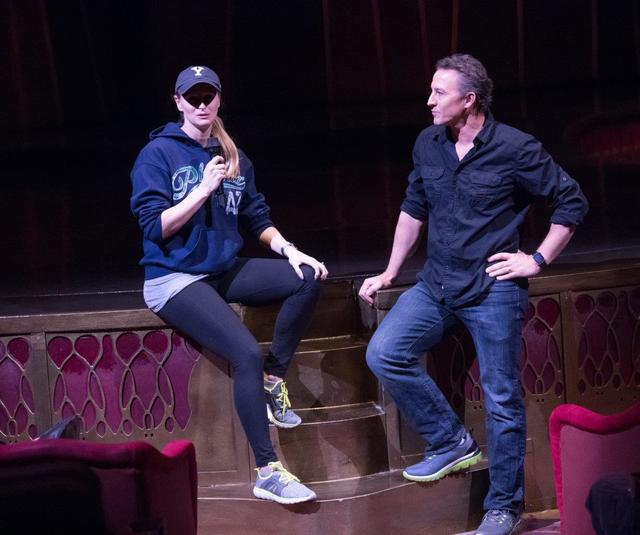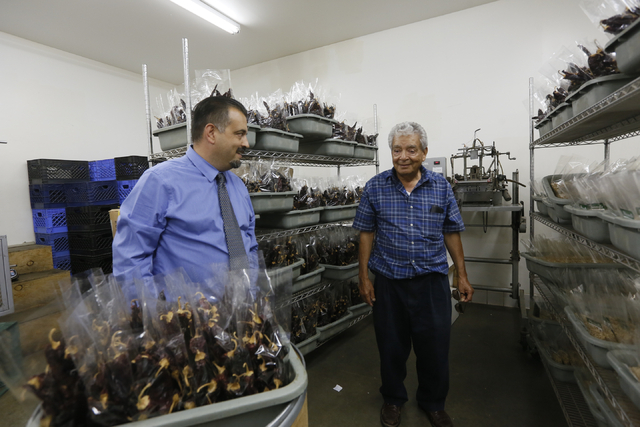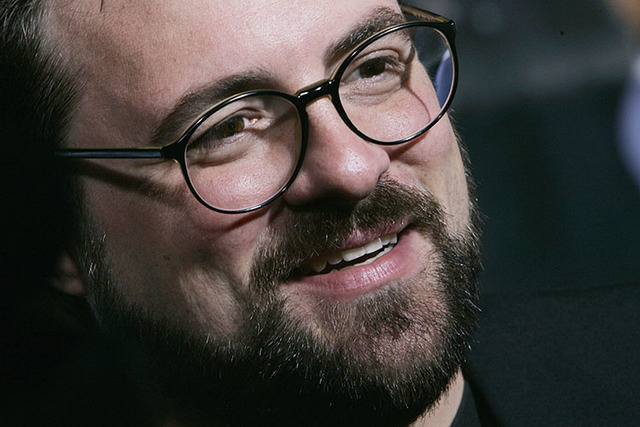Big rigs rubbing and racing at the Bullring







Race fans are used to seeing big rigs at Las Vegas Motor Speedway, but those trucks often transport racecars inside them.
They aren’t the racecars.
Except those big trucks will be the ones rubbing and racing this weekend at the LVMS Bullring.
North American Big Rig Racing makes its debut on the 3/8-mile oval, which seems like an awfully small space to handle vehicles that squeeze out the sun on the freeway.
“They slide around a little bit,” said Ron Singer, who drives the No. 71 truck. “You’ve got to be really cautious when you’re going into a corner and coming out of a corner and making sure you don’t ride up half a groove and hit another truck at 10,000 pounds. Well, then you’re at 20,000 pounds going 90 mph out of control.”
For those interested in seeing for themselves, spectator gates open at 5 p.m. Saturday, and the four-lap North American Big Rig Trophy Dash takes place at 7 p.m.
The rigs also will have two eight-laps heats to qualify the cars in reverse order, meaning the fastest trucks start in the back to foster competition. Those who appear to intentionally drive slow in the heats also will get sent to the rear, so the rigs won’t have a Philadelphia 76ers situation on their hands.
The night concludes with the rigs fighting it out in a 40-lap race.
Las Vegas is the season opener, and though NABRR is based in Canada, six of the seven races take place in the U.S. The season finale is Aug. 29 in Victoria, British Columbia.
This might be the series’ first trip to the Bullring, but organizers hope it’s far from the last.
“As soon as you’re talking to anybody in regard to sponsors, you mention Las Vegas and you’re racing there, their ears perk up,” said NABRR president Isaac Harder, who also drives the No. 36 truck. “We can start our season down in Las Vegas earlier than when tracks usually open up here.”
Those involved in racing big rigs don’t have visions of making this a professional sport. They have other jobs that pay the mortgage, and racing is a hobby to satisfy the urge for speed.
But they treat it like a professional sport, with 12 dedicated Canadian teams — some Americans also participated before the economy crashed in 2008 — that Harder said he would like to grow to 15 or 16. He said the number of races is just about right.
NABRR began racing in Alberta, British Columbia and in Washington state in 1989, and the early years didn’t always go smoothly with drivers learning how to manage such big trucks on a small track with other big trucks.
A few years ago, one truck not only went into the wall in Calgary, but went over it. Another time, also in Calgary, two trucks touched wheels, sending one over the wall.
The major accidents have become far fewer since then, the drivers more adept at handling the tight spaces.
“The group has gotten a lot tighter, and we’ve got a respect for each other,” Singer said. “With it being a tight group, we’ve all come to understand everybody’s driving styles. You can predict what another driver is going to do.”
So for those fans planning to head out to the Bullring on Saturday expecting to see Scott Gafforini win another Super Late Model race, don’t be confused by the big rigs that are on the track and not sitting beside it.
“First-time fans, they’re usually quite hesitant,” Harder said. “They’re kind of looking, I guess, in anticipation. They don’t really believe that they’re made to race until they actually see us go.”
Contact Mark Anderson at manderson@reviewjournal.com or 702-387-2914. Follow him on Twitter: @markanderson65.












